TOKYO — Japan’s parliament on Tuesday elected ultraconservative Sanae Takaichi as the country’s first female prime minister, and she underlined her commitment to boosting Japanese defense as she prepared to host visiting U.S. President Donald Trump next week.
Takaichi replaces outgoing Shigeru Ishiba after the long-ruling Liberal Democratic Party suffered disastrous losses in July elections for parliament’s upper house and lost its majority in the lower house last year. Her election comes a day after Ishiba’s party struck a deal in a fragile coalition with a new partner expected to pull her governing bloc further to the right.
“I’m determined to build a strong Japanese economy and protect Japan’s national interest with diplomacy and security,” said Takaichi, a security hawk who was elected head of the Liberal Democratic Party on Oct. 4 after Ishiba resigned to take responsibility for the latest election defeat.
Takaichi cited the Japan-U.S. alliance as a “cornerstone” of Japanese diplomacy and stressed that Japan is an indispensable partner for America in its strategy to provide counterweights to China in the Indo-Pacific region. Trump is scheduled to visit Japan Monday through Wednesday.
While Takaichi made history by becoming the first female leader of a country where men still largely hold sway, she has not promoted gender equality or diversity.
An admirer of former British Prime Minister Margaret Thatcher, Takaichi is among the Japanese politicians who have stonewalled measures for women’s advancement. She supports the imperial family’s male-only succession, and opposes allowing separate surnames for married couples.
And despite a pledge to drastically increase the number of women in the Cabinet, she appointed only two woman ministers — Satsuki Katayama as finance minister and Kimi Onoda as economic security minister.
Takaichi also opposes same-sex marriage.
“The birth of Japan’s first female prime minister is epoch-making, but she casts a dark cloud over gender equality and sexual minority rights,” said LGBTQ+ rights activist Soshi Matsuoka, adding that Takaichi’s “extremely conservative” views could be a “serious setback” for the rights of sexual minorities.
However, some Japanese feel that her breaking the glass ceiling in politics is an important marker of progress in itself.
The Liberal Democratic Party’s alliance with the Osaka-based right-wing Japan Innovation Party, or Ishin no Kai, is short of a majority in both houses, but Takaichi was still able to win the premiership because the opposition is not united.
Her alliance’s lack of a majority will mean that it will need to court opposition groups to pass any legislation — a risk that could make her government unstable and short-lived.
Takaichi on Tuesday stressed the need to cooperate. “Without political stability, we cannot achieve strong economic policies, diplomacy, security or anything,” she said.
Takaichi is preparing for a major policy speech later this week, talks with Trump and regional summits during which she also needs to ensure stable ties with China and South Korea. She needs to quickly tackle rising prices and compile economy-boosting measures by late December to address public frustration.
A protege of assassinated former Prime Minister Shinzo Abe, Takaichi is expected to emulate his policies, including a stronger military and economy. With her potentially weak grip on power, it’s not clear how much Takaichi will be able to achieve.
Takaichi was first elected to parliament in 1993 and has served in senior posts including as minister of economic security and internal affairs, but her diplomatic background is thin.
When the centrist Komeito party left the governing coalition, it raised concern about Takaichi’s view of Japan’s wartime past. She has taken part in regular prayers at the Yasukuni Shrine despite protests from Beijing and Seoul, which see the visits as a sign of lack of remorse for Japanese aggression. Some of Takaichi’s remarks have also been denounced as xenophobic.
Takaichi, who is pro-Taiwan, has toned down her hawkish rhetoric. On Friday, she sent a religious ornament to Yasukuni instead of going there herself.
On Tuesday, she said she wants stable ties with Seoul and hopes to meet with South Korean President Lee Jae Myung. “There may be worries, but I love Korean seaweed, I use Korean cosmetics, and I watch Korean dramas too.”
Information for this article was contributed by Mayuko Ono, Reeno Hashimoto, Kim Tong-hyung, Simina Mistreanu and Sam McNeil of The Associated Press.
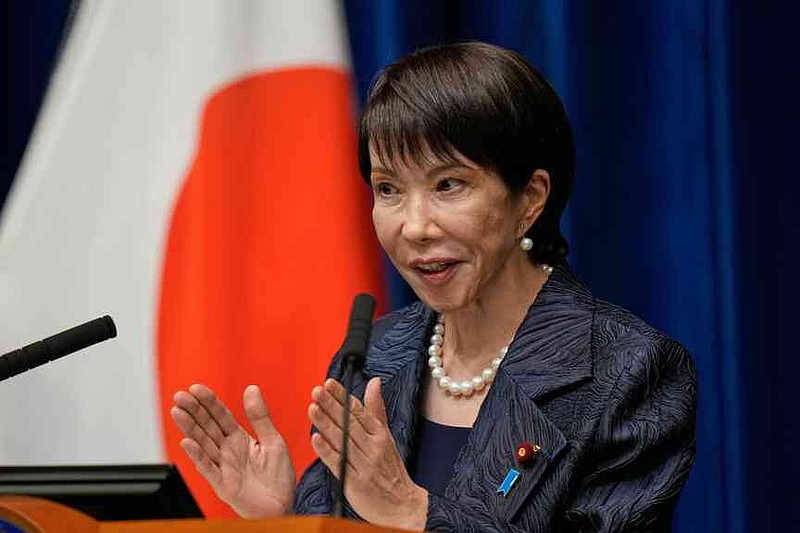 Japan’s new Prime Minister Sanae Takaichi speaks during a press conference at the prime minister’s office in Tokyo, Japan, Tuesday, Oct. 21, 2025.(AP Photo/Eugene Hoshiko, Pool)
Japan’s new Prime Minister Sanae Takaichi speaks during a press conference at the prime minister’s office in Tokyo, Japan, Tuesday, Oct. 21, 2025.(AP Photo/Eugene Hoshiko, Pool)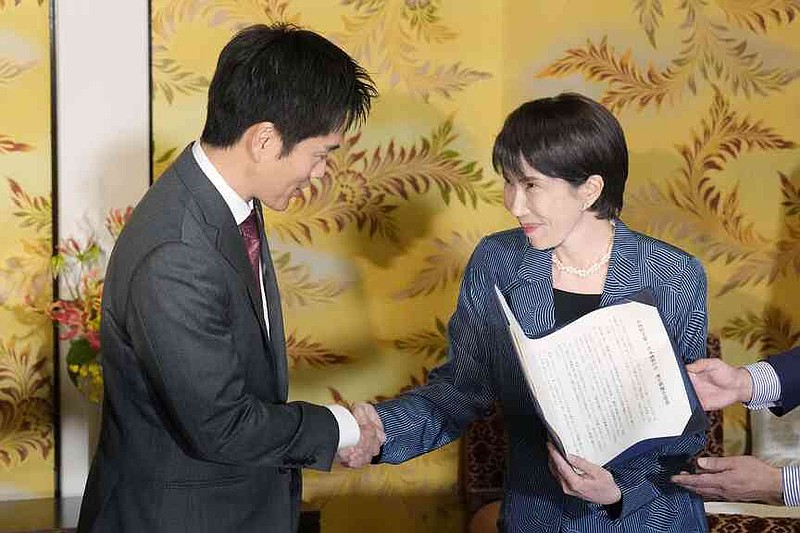 Japan’s Liberal Democratic Party President Sanae Takaichi, right, and leader of Japan Innovation Party, or Ishin no Kai, Hirofumi Yoshimura shake hands after signing an agreement to form a coalition government in Tokyo, Monday, Oct. 20, 2025. (Kyodo News via AP)
Japan’s Liberal Democratic Party President Sanae Takaichi, right, and leader of Japan Innovation Party, or Ishin no Kai, Hirofumi Yoshimura shake hands after signing an agreement to form a coalition government in Tokyo, Monday, Oct. 20, 2025. (Kyodo News via AP)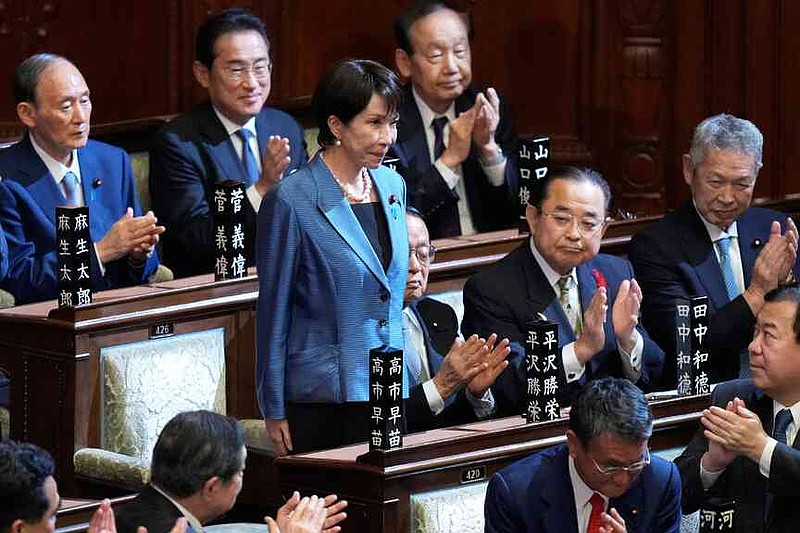 Lawmakers applaud as Sanae Takaichi, standing, was elected as Japan’s new prime minister during the extraordinary session of the lower house, in Tokyo, Japan, Tuesday, Oct. 21, 2025.(AP Photo/Eugene Hoshiko)
Lawmakers applaud as Sanae Takaichi, standing, was elected as Japan’s new prime minister during the extraordinary session of the lower house, in Tokyo, Japan, Tuesday, Oct. 21, 2025.(AP Photo/Eugene Hoshiko)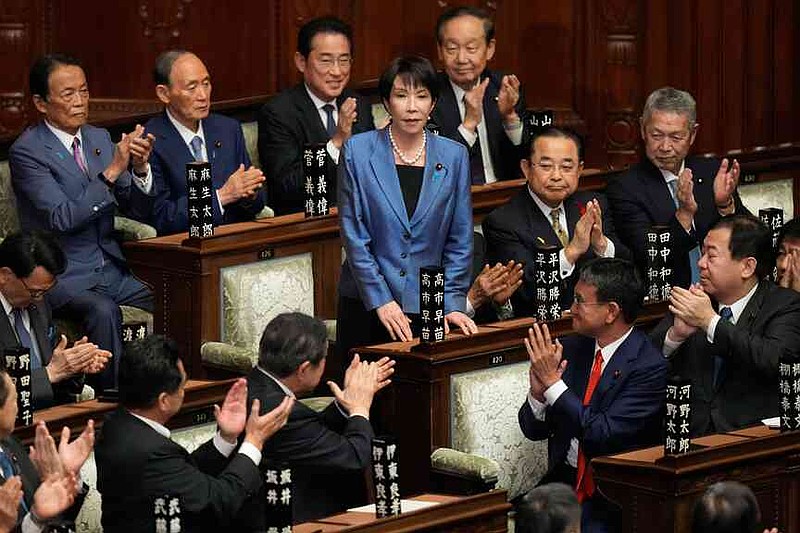 Lawmakers applaud as Sanae Takaichi, center, is elected as Japan’s new prime minister during the extraordinary session of the lower house, in Tokyo, Japan, Tuesday, Oct. 21, 2025.(AP Photo/Eugene Hoshiko)
Lawmakers applaud as Sanae Takaichi, center, is elected as Japan’s new prime minister during the extraordinary session of the lower house, in Tokyo, Japan, Tuesday, Oct. 21, 2025.(AP Photo/Eugene Hoshiko)

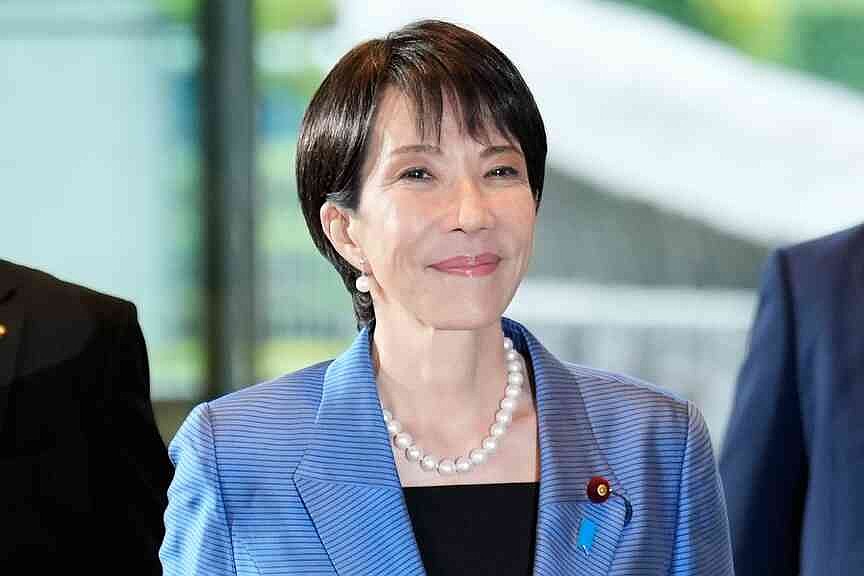
AloJapan.com